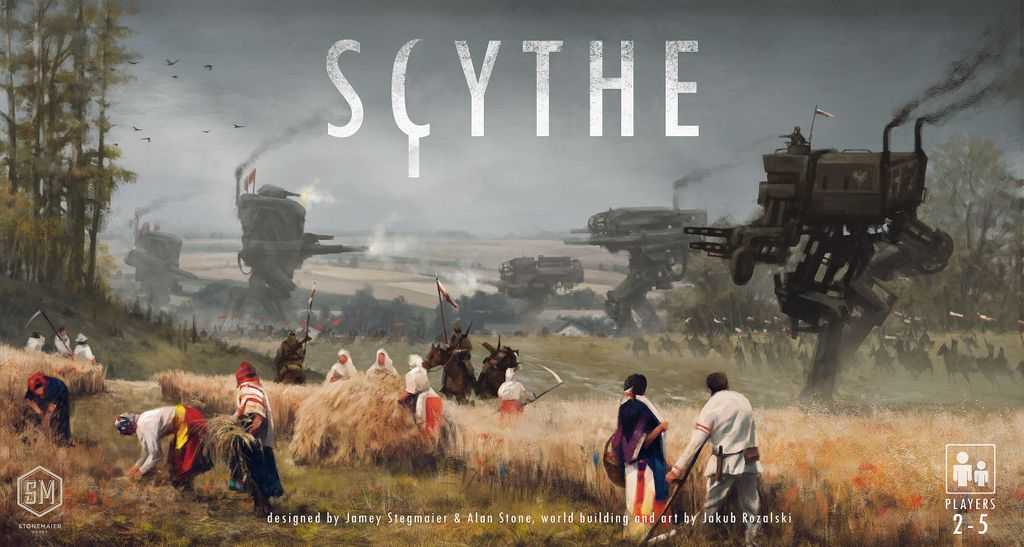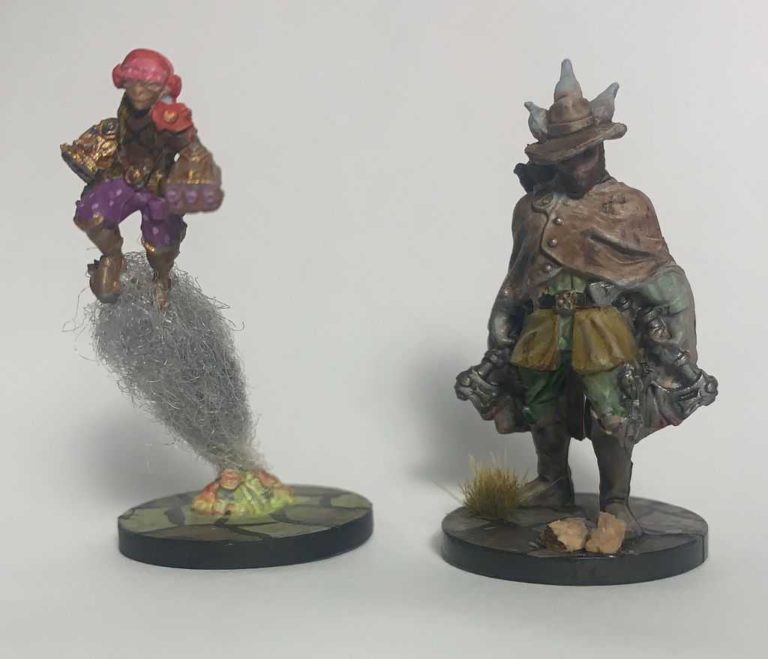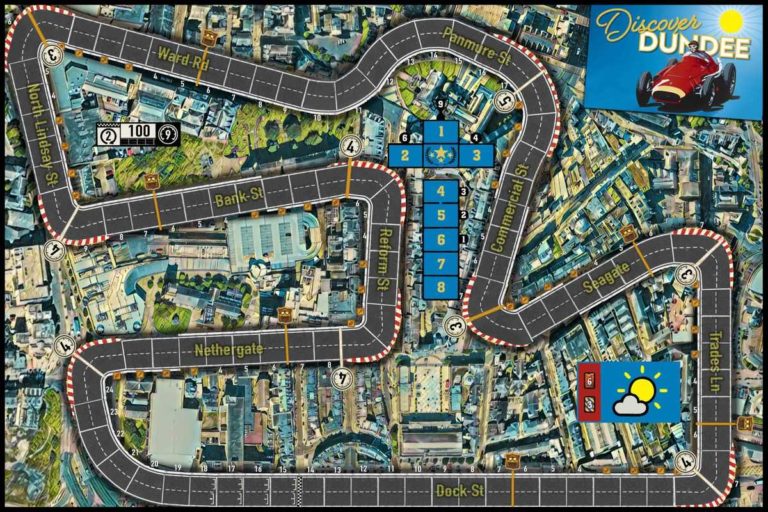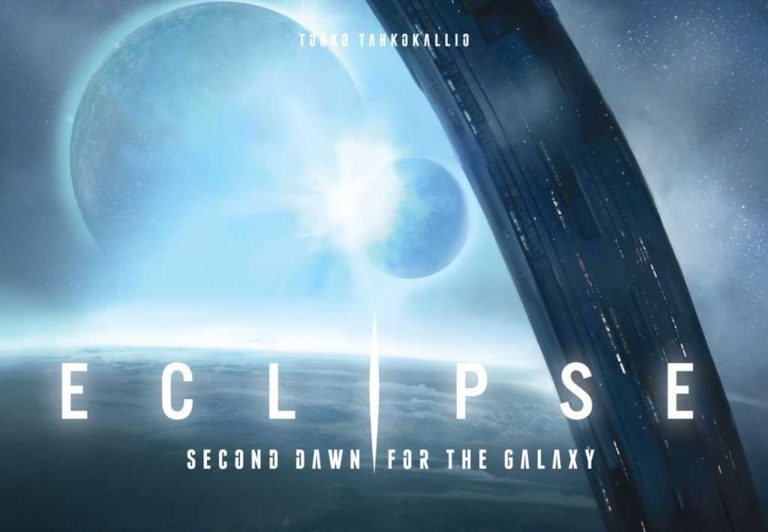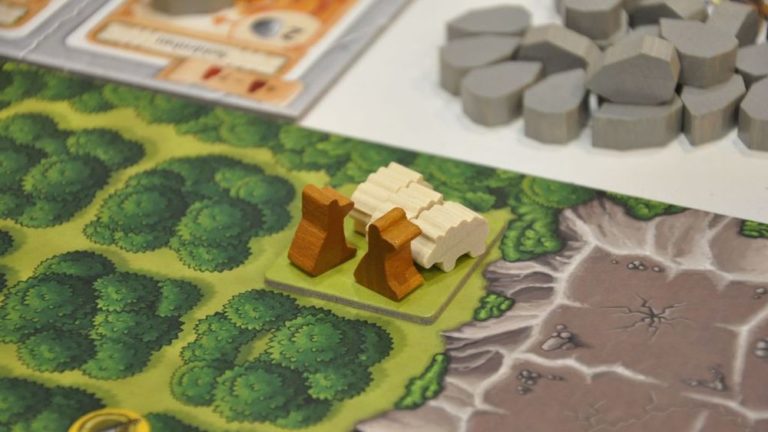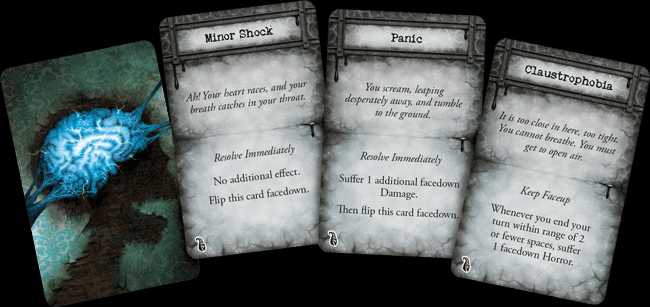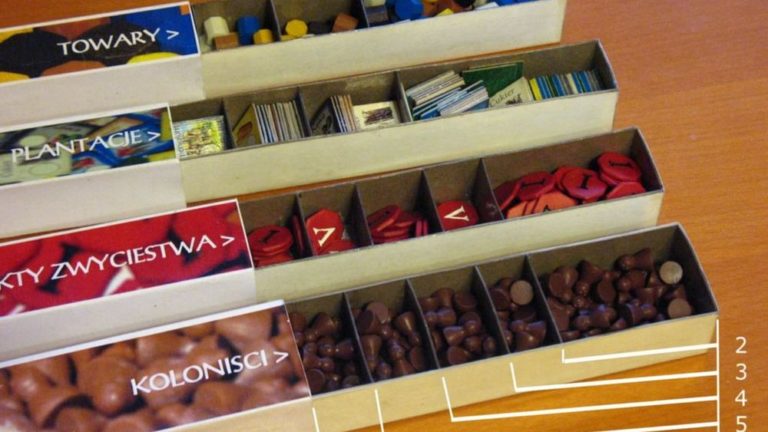Scythe Review – Unbiased Analysis And Insights
Scythe Review – Unbiased Analysis And Insights
Ah, Scythe, a title that piqued my curiosity the moment it emerged on the scene. It’s one of those games that promises a blend of mech-mayhem and cutthroat strategy, a promise that had me intrigued right from the unboxing. I still remember the first time I laid out all the components on the table; it felt like a ritual, ushering in a new phase of my board game passion. Scythe is not simply a game; it’s an experience woven through intricate mechanics, stunning art, and the silent build-up of cold war tension among players.
Key Points:
- Scythe offers a blend of mech-mayhem and cutthroat strategy in a captivating alternate-history 1920s setting.
- The game seamlessly fuses worker placement, area control, and resource management, appealing to both experienced and novice players.
- The game’s artwork is visually stunning and evocative, enhancing the immersive experience.
- Scythe offers high-quality components and thoughtful design, contributing to its tactile delight and longevity.
- The game presents a steep learning curve but rewards persistence with a rich and engaging gameplay experience.
- Player interaction, diplomacy, and a balanced combat system add depth and tension to the game.
- Scythe’s expansions and variants provide fresh narratives, mechanics, and replayability, elevating the game to a modern classic.
Diving into Scythe for the first time, I was met with a complex tapestry of rules and strategies. I’ve heard it described by friends and fellow gamers as a masterpiece and a lesson in multitasking – where every decision counts and foresight is your greatest ally. The discussions and debates that have ensued during and after every game night have only reinforced my fondness for this title. It’s a game that truly captures the cognitive and strategic engagement that hardcore gamers like myself crave.
But it’s not just about the complexity; Scythe has an allure that beckons players of all stripes. Whether it was the bright-eyed newbie, eager to dive into a serious strategy game, or the seasoned veteran looking for their next big challenge, Scythe has continually offered a rich and rewarding experience. Through each session, it’s not only the landscape of the game that evolves but also our understanding of its depths, our strategies, and the tales that arise from the ashes of each conflict or the triumphs of well-crafted plans.
What Sets Scythe Apart in the Board Game Arena
What really sets Scythe apart is its incredible ability to fuse disparate board game mechanisms into a seamless tapestry of gameplay. It’s like this gorgeous symphony, where each note is a mechanic that perfectly complements the rest, creating a harmony that resonates with your tactical soul. The juxtaposition of worker placement with area control, and the undercurrent of resource management, makes for a game that feels both classical and innovative at the same time. It’s the sort of game that speaks to the experienced player, offering a fresh challenge around every corner, yet possesses an underpinning structure that guides even the most novice players through the fog of war.
The Premise and Unique Appeal of Scythe
Set in an alternate-history 1920s, Scythe unfolds in a world licking its wounds after a great war, with factions vying for control and power. The unique appeal of Scythe comes from this blend of steampunk aesthetics married to the reality of post-war resurgence. How can you not be enraptured by the unique asymmetrical factions, each clawing their way to dominance in their own distinctive way? Exploration, expansion, and exploitation of the land evoke a sense of progress and power.
It’s this gritty atmosphere that speaks volumes, creating a back-story that unspools as you build your empire. Every time you play, it isn’t just Eurogame mechanics – it’s a tale of rivalry, strategic alliances, and sometimes, unexpected treachery. This story-driven aspect imbues each play with a personal narrative, creating epic gaming sessions where memories are forged. And isn’t that what we all seek in a great board game? Those stories we can’t stop talking about?
The faction mats and player boards pair beautifully, ensuring that no two games of Scythe are alike. The mix of strategy and luck with the encounter cards adds just enough uncertainty to keep the veterans guessing and the newcomers thrilled. It’s like weaving your own epic novel, each session a new chapter, with a cast of characters that you grow to admire, maneuver, and sometimes fear.
Scythe’s unique blend of steampunk aesthetics, post-war resurgence, and asymmetrical factions creates an epic gaming experience filled with personal narratives and memorable stories.
A Brief Overview of Scythe’s Gameplay Mechanics
Scythe is a masterclass in game design, where your action selection must be as efficient as your moves on the map. On a mechanical level, it’s a careful dance between choosing actions, upgrading capabilities, and establishing presence on the board. Choose your actions and upgrades wisely, for they are the lifeblood that fuels your empire’s heartbeat. Fail to harmonize them, and you’ll feel the sting of stagnation as other players outmaneuver you – a lesson I learned the hard way during one memorable game night.

Developing a strategy that balances mech warfare with peaceful expansion is key to mastering Scythe. The mechanics are such that player engagement is constant, yet confrontation is not always the path to victory. This strategic depth creates a tension that is palpable throughout the game. You’re immersed in a strategic ballet, always planning two steps ahead, pondering not only your moves but also anticipating your opponents’. It’s this dance that makes each session with Scythe a profoundly cerebral experience.
Delving into the World of Scythe
Embarking on a game of Scythe is like stepping into a fantastical yet familiar world, teetering on the edge between reality and imagination. The setting is almost tangible, thanks to the rich artwork and theme that envelop players, warmly inviting them to leave their present selves behind and become ambitious leaders in a dystopian landscape basking in the aftermath of war and the promise of futuristic technology.
The Artwork and Theme
The artwork of Scythe is nothing short of breathtaking. With each glance, you’re drawn into this vibrant yet somber world indebted to the brush strokes of the talented Jakub Rozalski. The juxtaposition of pastoral landscapes with hulking mechs is a visual treat, offering a deep immersion that’s rare in board games. This union of beauty and desolation tugs at the heartstrings, invoking a sense of nostalgia for a time and place that never was, yet feels incredibly real.
It’s the theme that sings through every aspect of the game. The factions, while mechanically unique, are also steeped in lore that befits their visual identity. Engaging with Scythe is as much about delighting in the artwork and narrative as it is about strategizing for victory. The artwork not only serves an aesthetic purpose but also plays a crucial role in fostering an intuitive understanding of the game’s complex systems – a brilliant move that both enchants and educates players simultaneously.
The artwork of Scythe is a breathtaking union of beauty and desolation that tugs at the heartstrings, invoking a sense of nostalgia for a time and place that never was, yet feels incredibly real.
Components and Quality
Let’s talk about the components of Scythe – the physical embodiments of the game that turn a good experience into a great one. The moment you open the box, the tactile experience begins with high-quality materials that demonstrate the care and thought put into every piece. The mech miniatures stand proud, each a testament to the game’s vivid setting, and the faction leader figures imbue the game with character and depth.

The custom wooden resources, coins, and meticulously crafted player mats are a tactile delight, enhancing the gameplay with their heft and design. It’s clear that these components were meant to be handled, appreciated, and admired, a consideration that has made my collection the center of conversation whenever the game hits the table. There’s a certain reverence that comes from playing a game that feels as though it was crafted by artisans, and Scythe effortlessly commands that respect.
Moreover, the addition of dual-layered player boards in Scythe transforms routine actions into a more engaging encounter. Every slot and cutout has been thought through, allowing for easy tracking of resources and progress. Even the dimensionality adds to the game’s allure, providing both functional and aesthetic pleasures. It’s this obsessive attention to detail that places Scythe in a league of its own when it comes to component quality and design. Couple this with my penchant for sleeving cards, and you get a game that is not only pleasing to the eye but also stands the test of active, frequent play.
The Learning Curve of Scythe
Scythe is akin to a delicious, gourmet meal – it takes time to prepare and to truly appreciate its complexities and flavors. The learning curve represents the culinary journey from gathering ingredients to savoring that perfectly balanced bite. It challenges newcomers and veterans alike, blending the satisfaction of mastering a complex dish with the joy of sharing it with others.
Understanding the Rules
The rulebook of Scythe is a coupe offering clarity amidst potential confusion, providing comprehensive guidance through the game’s intricacies. While the bevy of rules and mechanics appear daunting at first glance, they’re structured in a way that eases players into the game’s universe – starting off as broad strokes that gradually refine into finer details.
When I first encountered Scythe’s rules, it felt somewhat like learning a new language – one filled with symbols and terminology particular to its own world. However, I found that with each subsequent play, the rules became second nature, transforming from cognitive exercises to automatic responses. This accessibility is a blessing for bringing in new players and is especially crucial in a game that thrives on strategic depth and planning.
For the newcomer, it may seem like an uphill battle at first, but rest assured, persistence pays off. As you immerse yourself more and more into the turns and strategies, a clear path emerges; actions make intuitive sense, and objectives become attainable goals rather than lofty aspirations. It’s the kind of learning curve that is steep but ultimately enriching, effectively providing a ‘tutorial’ through its own gameplay.
Strategies for Beginners
If you’re just starting out with Scythe, I have a few strategies that I’ve found particularly effective. Peer closely at the faction abilities and player mats, as they are the cornerstones of your strategy. Optimize your actions to make the most of your unique advantages, and don’t be afraid to pivot as the game unfolds.
Keep these tips in mind:
- Focus on upgrading early to improve your efficiency.
- Aim to control key territories that will benefit you most in the upcoming turns.
- Don’t shy away from leveraging the encounter cards; they can provide game-changing outcomes.
Remember, Scythe is a balance of power and precision. It’s not just about expanding your territory, but knowing when to develop your infrastructure and when to engage with other players. A beginners’ strategy doesn’t need to be overly complex; focus on a few core actions you can perform well, and build from there. I’ve found that the sweet spot lies in maintaining a growth mindset, observing what more experienced players do, and learning from the patterns that lead to success. It’s this attentive adaptation that sets a solid foundation for future victories.
The Core Gameplay Experience
Delving into the heart of Scythe, the core gameplay experience is all about intricate layers and delicate balances – an ecosystem of actions that thrive on player choices and interactions. Each session is a narrative in itself, with the board becoming a living tapestry of ambitions, alliances, and subtle power struggles.
Player Interaction and Diplomacy
One of the most compelling aspects of Scythe is the player interaction that’s woven organically into its fabric. It’s a cold war come to life, where the threat of conflict looms large yet often remains just that – a threat. The tension that this diplomatic dance generates is palpable, a testament to the game’s design that amplifies the psychological depth of every move and countermove.

For instance, forming temporary alliances can be a strategic boon, but as is often the case, trust must be measured and betrayal is a bitter potential. The moments around the board where silent negotiations and unspoken agreements take shape add a layer of human complexity to the game that is both fascinating and thoroughly enjoyable. Every interaction, whether it’s a shared benefit from an action or a deceptive feint leading to a surprising victory, makes the game feel alive and dynamic.
The player interaction in Scythe creates palpable tension and psychological depth, where forming alliances and navigating trust adds a layer of human complexity that makes the game feel alive and dynamic.
Combat System: War and Peace in Scythe
The combat system in Scythe is a game of war and peace, deftly balancing aggression with the art of restraint. It’s a risk-versus-reward scenario, where battles can lead to pivotal changes on the board but at a potentially high cost. This subtle strategizing around when and where to engage – or whether to engage at all – is a cornerstone in the world of Scythe.
Battles are resolved through a streamlined process that uses power dials and combat cards, a method that emphasizes strategic intention over sheer luck. This system encourages players to think critically about the timing and investment in each conflict, creating moments of tension and triumph when a well-planned battle can shift the tides of war. However, one must always be mindful of this: in the aftermath of combat, the ground gained is only as valuable as the resources and options it affords you. It is this delicate interplay that leaves room for peace to be just as powerful a weapon as war, making for an engrossing and multifaceted gameplay experience.
The Expansion of the Scythe Universe
Scythe is a game that refuses to stand still, with an expanding universe that constantly adds to its intrigue and depth. As someone who’s plunged enough hours into Scythe to rival a full-time job, I’ve been impressed at how these expansions breathe fresh life into the game – new narratives, mechanics, and strategic nuances – and ensure that each return to the board feels like an exhilarating new conquest.
Expansions and Variants
If you’re anything like me, you’ll realize that the base game of Scythe is merely the tip of the iceberg. The Rise of Fenris is the expansion that stands tallest in my memory. It’s like watching your favorite TV series and finding out there’s a brilliant sequel. Additional modules and even a thrilling campaign mode offer a banquet of gameplay that’s too tempting to pass up. For more casual encounters, or when you want to mix things up, Scythe: Encounters adds a deck of powerful new cards that invoke delightful twists and turns.
Playing with the expansions, I felt like I was charting new territory. Each addition, whether it’s the airships in The Wind Gambit or the new challenges that come with Invaders from Afar enhances the dynamics of the game. And when it’s time to dial things down, or you want to introduce the game to younger strategists, My Little Scythe offers a wonderful, streamlined take on the Scythe experience.
The Scythe expansions offer a thrilling and dynamic expansion of gameplay, adding new modules, a campaign mode, powerful cards, and exciting challenges, making it feel like charting new territory.
Replayability and Longevity
What’s utterly compelling about Scythe is the sheer scale of replayability. Every game unfolds with its own unique narrative, thanks in part to different faction and player mat combinations, each begging for a new approach. The expansions fuel this fire, offering new factions, scenarios, and objectives that promise and deliver on endless strategic experiments.
The community often debates Scythe’s longevity, but from where I stand, the game is like a classic novel you can read over and over, discovering new quirks each time. The Automa system, brilliant solo play that pits you against a sophisticated AI, ensures even the solitary gamer has a mountain to climb and conquer. My personal love for the depth of variety is matched only by the apparent meticulous care the designers have put into each iteration of the game.
Analyzing the Pros and Cons
No game is without its faults, and Scythe, despite being a treasure trove of strategic gaming, is not immune. As someone who’s spent countless nights plotting the perfect sequence and drawing battle lines across the intricate board, I’m quite familiar with the game’s dual nature.

What Scythe Does Well
Scythe is a testament to a perfectly balanced blend of mechanics and theme. It is aesthetically striking, with each component from the board to the miniatures adding to the intense atmosphere. The game’s engine-building aspect, coupled with area control and resource management, makes each decision critical and exhilarating. It’s no surprise that the robust strategic gameplay is often cited in discussions amongst my gaming guild.
Player interaction is another asset. The careful dance of diplomacy, conflict, and cooperation keeps the tension high and the gameplay engaging. What’s more, Scythe doesn’t overstay its welcome. Its pacing is swift enough to maintain excitement without rushing players through their strategic plotting.
Scythe is a thrilling game that expertly combines mechanics and theme to create intense strategic gameplay with balanced player interaction.
Potential Drawbacks of Scythe
Despite the allure, Scythe can be an enigma for some players. The connection between the action selection puzzle and the geographical tug-of-war on the map is often a complex dance that not everyone can master. Some find the combat lacking in excitement, a necessary evil rather than a thrilling clash of mechs. Others note the deterministic nature of gameplay, which can detract from a feeling of spontaneous fun.
A common thread of criticism lies in the game’s initial pace, which can be slow, and in the constraints that can sometimes make strategic moves feel frustratingly limited. Moreover, the river crossing rules sometimes come off as overly restrictive and thematic inconsistencies are occasionally noticeable. While the visual splendor is universally praised, the actual enjoyment can hinge on one’s personal taste for intricate strategy and planning.

FAQs
How long does a typical game of Scythe take to play?
A typical game of Scythe lasts about 90 to 120 minutes, although this can vary based on the number of players and their familiarity with the game’s mechanics.
Is Scythe suitable for players new to strategy board games?
Scythe might present a steep learning curve for those new to strategy board games, but its immersive theme and engaging gameplay provide a rewarding experience for those willing to invest the time to learn.
Can Scythe be played solo, and if so, how does the solo mode work?
Yes, Scythe can be played solo. The solo mode uses an Automa system, which emulates a human opponent through a deck of cards dictating the moves of the AI-controlled factions.
What is the recommended player count for the best experience with Scythe?
The recommended player count for the best experience with Scythe is usually 3 to 5 players, offering a balanced mix of interaction and competition.
Conclusion
Reflecting on the landscape of strategy games, I feel it’s clear that Scythe has staked a claim as a modern classic. This Scythe review is testament to the game’s ability to captivate and challenge players with its complex web of strategy, aesthetics, and innovation.
Scythe is a game that unapologetically demands your attention and strategic deliberation. It’s a tapestry of mechanical precision interwoven with thematic richness, one that has eternally carved a spot on my gaming shelf and in my board-gaming heart.
The game continues to be a polarizing force within the community, with enthusiasts like myself locked in its enduring embrace, while others are held back by its intricacies. Yet, its mere presence invites debate, reflection, and ultimately, growth in our understanding of what makes a board game transcend the ordinary.
Farewell, my fellow gamers, and may your ventures across the lands of Scythe be as enthralling as they have been for me. Until we cross paths in the midst of mech battles or by the glow of the factory’s heart – happy gaming!
Lucas
More Boardgame Reviews:
This article uses material from BoardGameGeek and is licensed under the Creative Commons Attribution-Share Alike License.

